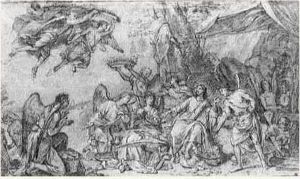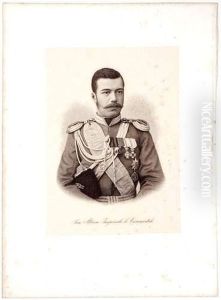Nicolas Ii De Poilly Paintings
Nicolas II de Poilly was a French engraver born into a family deeply rooted in the world of art and printmaking. Born in 1627, Nicolas II was part of the extensive de Poilly family, which included several prominent artists and engravers across generations. His works and contributions to the art world are often celebrated for their precision and beauty, characteristics that have made the de Poilly name synonymous with quality in the realm of engraving.
Nicolas II's career was marked by a dedication to capturing the elegance and detail of his subjects, which ranged from portraits to landscapes and religious scenes. He was particularly known for his skill in the technique of engraving, a method that requires both artistic talent and meticulous craftsmanship. Engraving involves incising a design onto a hard, usually flat surface, by cutting grooves into it. This technique allowed Nicolas II to produce prints with remarkable detail and depth, qualities that were highly prized in his time and continue to be admired today.
Living and working in the heart of Paris, Nicolas II de Poilly was an active participant in the vibrant artistic community of the city. The period in which he lived was one of significant artistic innovation and exchange, which undoubtedly influenced his work and career. His engravings were sought after by collectors and art enthusiasts, not only in France but across Europe, attesting to his reputation and the high regard in which his work was held.
Despite his success, much of Nicolas II de Poilly's life and work have been overshadowed by the achievements of other artists of his time and even by other members of his own family. However, his contributions to the art of engraving and the legacy of the de Poilly family's artistic endeavors remain significant. Nicolas II de Poilly passed away in 1696, leaving behind a body of work that continues to be studied and appreciated by art historians and enthusiasts alike. His engravings serve as a testament to the skill, dedication, and artistic vision that characterized his career and the broader tradition of French engraving during the 17th century.


